Constant coughing combined with the spewing of an oval or round shaped ball of mucus, are sure signs your cat has a hairball. But, how does your cat manage to get hairballs and what are they made of?
A hairball is a mixture of undigested food and hair that has become lodged in the stomach of your cat and combined itself with a mucus substance. The reasons behind why these hairballs form is only speculative. As the cat coughs, it is working the obstruction out, leaving you to find it either on the floor, bed, couch etc.
The hair part of a hairball is caused when your cat is performing his regular grooming duties, and has acquired a mass amount of loose hairs on his tongue and has swallowed them sending them directly to his stomach. When food has become a part of a hairball it can either be due to inefficient chewing of the food or food that has simply become locked in the already present hair and mucus.
For the most part, a healthy cat is able to dislodge the hairball from the stomach. However, on occasion, hairballs can become lodged in the intestines. This can cause serious, life threatening results. Signs that your cat may have a hairball he cannot loosen himself include constipation, lethargy, loss of appetite and an unhealthy look to his coat. If any of these signs are present, it is imperative that you visit a local veterinarian. X-rays can determine if in fact your cat has a hairball that must be removed by surgery or if there is another illness present causing these symptoms.
As with any common ailment, prevention is the key. Grooming your cat on a daily basis is one of the most important preventative measures you can take against hairballs. Brushing and combing your cat on a daily schedule will assist in removing the loose hairs he might have otherwise ingested.
It is important to remember that starting your cat on a grooming schedule when he is a kitten will allow him time to become accustomed to the routine. Most cats learn to enjoy this special time and will even alert you himself that it is time for his grooming.
Long haired cats are especially at risk for hairballs, so extra grooming care is a perfect weapon against these potential dangers. If you own a cat that does not have an affinity for the use of a brush or comb, an alternative tool called a grooming glove may be the answer. The technique of the glove is to use it as if you were petting your cat, giving him the illusion that he is just experiencing luxury time and not grooming time.
Additional methods to help prevent hairballs include specially formulated dietary supplements. There are several brands and varieties of special dry cat foods formulated with nutrients to help alleviate the occurrence of hairballs. However, it is best to consult your veterinarian as to which brand is recommended as not every brand is equal in quality. If your cat already has signs of a non serious hairball, there is a specially formulated gel that can be added to his daily food to help lubricate the hairball. This will allow the hairball to either pass through the body or dispense through coughing.
Everyone has a list of homemade remedies for many of these common ailments and afflictions. For instance, butter, mineral oil, and pumpkin have been thought to help in the dislodging of a hairball. While these remedies as well as store bought ones may be successful, a consultation with your veterinarian first can ensure that whatever method you choose is not harmful in any other way to your precious feline.
Just as newborn babies require a series of vaccinations and booster shots, so do kittens and puppies. These vaccines are one of the most important ways to keep your kitten happy, healthy and safe.
A kitten who is six to eight weeks old should attend his first visit to the veterinarian. As kittens receive milk from their mothers, they are also receiving antibodies that help protect them against infectious diseases.
Once they reach the six to eight week age however, the kittens must receive vaccinations in order to build antibodies against these diseases on their own.
Upon this visit, your kitten will receive a thorough physical examination. In addition, a series of tests will be performed on your kitten to ensure he has not already contracted these diseases. Tests such as a fecal exam and a blood test will reveal any abnormalities. These tests are significant for detecting Feline Infectious Peritonitis, Feline Leukemia and Feline Immunodeficiency virus.
Whether your cat is an indoor cat or one who likes to venture outdoors, they should all receive vaccinations. At your kitten’s first visit, he will receive the first in a series of FVRCPC vaccines along with a de-worming medication. The vaccine protects your kitten from the illnesses rhinotracheitis, calicivirus, panleudopenia and Chlamydia.
When your kitten has reached eight to twelve weeks old, he will then require a second visit to the veterinarian. Upon this visit he will receive an additional FVRCPC vaccination along with an FIP and a FLP vaccination if he is at risk for these diseases and an additional dose of de-worming medication. If your cat is one that wishes to partake in the wilds of nature, most veterinarian’s recommend that a kitten receive a Rabies vaccination at this time as well.
The third visit to the veterinarian is recommended when your kitten reaches the age of ten to sixteen weeks old. He will receive a third dosing of the previous vaccinations and depending on the status of worm infestation, a possible third dose of de-worming medication. If you’re adventurous outdoor kitten was previously under the age limit for a Rabies vaccination, one will be administered at this time.
When your kitten has finally reached his one year birthday, he will require another visit to the veterinarian for a physical exam and another series of the previous vaccinations. The Rabies vaccination your kitten received earlier is good for one year. Upon the anniversary of that date, he will require another Rabies vaccination that will then be good for three years. It is recommended by veterinarian’s that cats return each year for a booster injection for the FVRCPC as well as a physical checkup.
As with all vaccinations, there are some risks of potential side effects. The Feline Leukemia vaccine has been shown to occasionally cause a form of cancer at the site of the injection. For this reason, veterinarians do not typically recommend this vaccine unless your cat is at risk.
Other possible side effects include a growth at the injection site, which if caught in time can be removed before it has a chance to spread. Protecting your feline companion from dangerous and infectious diseases may have a few rare side effects, but when weighed against the turmoil and heartache the actual disease can cause the vaccinations are well worth it.
In today’s more pet conscious society, it is becoming more and more apparent that neutering your cat is the best and most responsible thing you can do. Every year, shelters, rescues and humane societies are over run with unwanted and unplanned for kittens. The fate of these loving and beautiful creatures is left up to the amount of people looking to add a fluffy companion to their home.
Another upsetting occurrence is the amount of feral cats that have increased in the last several years. A feral colony or wild cat colony is created by pet cats that are released by owners who are unable to care for them any longer. These colonies are a serious problem as cats can procreate several times a year and the kittens grow rather quickly. One male and one female feral cat can quickly turn into a colony of twenty in a short amount of time.
The feral colonies can become quite a problem as they are able to spread diseases to other dogs and cats quite rapidly and they are also most often infested with fleas and ticks. If a feral colony exists in your neighborhood, don’t expect to get much sleep when the females go into heat.
Males fighting and yowling for their chance to mate can be quite annoying. Kittens from these feral colonies can also be troublesome as they decide to playfully shred and dig up gardens and shrubbery as well as soil outside furnishings. As these cats are wild, trash cans become a wonderful food source and lawns seemingly become public toilets.
Neutering is not just a way to control the cat population; it also brings several benefits to your cat. No longer will an owner have to deal with the constant mewling of a female cat in heat, while at the same time, there will no longer be every tom cat in the neighborhood prowling your yard and fighting for territorial rights.
Tom cats that have not been neutered tend to stray far away from home in search of a waiting female. This can create the loss of a precious pet. Neutering is the best answer to keep your cat home. In addition, inside male cats, which have not yet been altered, will spray their distinct pungent odor on anything and everything in your home to mark his territory if a female in heat is around.
Another benefit to having your cat neutered is that it reduces the risk of their ability to contract some very serious reproductive cancers. Cats that have been neutered by the time they are one year of age, rarely contract these forms of cancer. Another reason for considering having your cat neutered is that an unaltered cat has a higher risk of transferring contagious and infectious reproductive diseases.
The benefits of neutering your cat are highly beneficial, although there is one slight downside. If you have a specific breed, altering does not eliminate it from being able to participate in cat shows as it does for dogs. However, if your cat wins the Best in Show title, anyone wanting a kitten from your prize winner will be very disappointed that you cannot provide one.
Most humane societies and shelters will alter a cat at the age of eight weeks old, but veterinarians generally recommend having your cat neutered at the age of five to six months. Occasionally, cats that have been altered at any early age have developed problems later on. Female cats undergo a more detailed surgery for alteration, so they must be kept quiet and indoors for at least a week. Male surgery is not as intensive, so male cats tend to bounce back to their playful selves rather quickly, but should still be kept indoors.
Surgery requires stitches, and those stitches must be kept clean. A daily check for puffiness or redness in the incision area is also recommended to avoid a severe infection. If your cat is constantly biting and licking the stitches, asking your veterinarian for a surgery collar will enable your cat’s incision the proper time it needs to heal.
Felines, as with all animals have their share of common occurring cat health problems like common cat illnesses and diseases. Many of these cat health problems are non-fatal and can easily be treated by a veterinarian, while others have no cure and are often fatal. These cat illnesses and diseases can be hereditary or contracted by exposure to previously infected animals.
First on the list of common illnesses a cat may acquire are hairballs. Hairballs occur as the result of cats performing their everyday grooming routine. Loose hair and debris collect in quantity on the cats tongue and are then swallowed into the stomach. When there, these elements become lodged and eventually form a round ball of mucus.
Typically, a cat can dislodge the hairball by coughing, but on occasion one may become lodged in the intestines creating a serious and sometimes life threatening situation. Regular grooming, specialty cat food and cat treats along with visits to the veterinarian are all great ways to both prevent and treat this common ailment.
Just like humans, cats are prone to urinary tract infections as well. The cause for this ailment can be infection and poor quality food. The good news is this ailment is treatable with medication prescribed by a veterinarian. It is also preventable by providing specially formulated cat food created to prevent this infection from occurring. If a urinary tract infection is present, common cat symptoms are that your cat may show signs of infrequent urination, fowl smelling urine, and urinating in places other than the litter box. Male cats that have not been neutered seem to be the most susceptible; however, females contract this infection as well.
Common Cat Viruses
There are three major viruses cats are extremely susceptible too; Feline Leukemia, Feline Infectious Peritonitis and Feline Immune Deficiency Virus.
FIP or Feline Infectious Peritonitis is a very dangerous cat illness as it is related to the Corona Virus. Testing for FIP is also a problem as the results are not completely reliable. A positive test result has the possibility for being false as the same results appear for the Corona Virus. There is a vaccination available for FIP; however, many veterinarians and scientists believe its results to be inconclusive. With no known cure, it is extremely beneficial that this disease is not as easily contracted as some other diseases may be.
The feline version of the AIDS Virus known as FIV has not yet proved to be fatal. However, unfortunately it has left owners of these cats fearful that they too will contract the disease. This belief is false and truly unwarranted.
Feline Leukemia Virus is another disease that is preventable. A vaccine is available from a veterinarian’s office and must be acquired before exposure to other infected cats has occurred. If you own a cat with FLV it is highly recommended that you do not expose him to other cats. The life expectancy of a cat with FLV is very short.
Common Cat Worms Problem
In addition to hairballs being one of the most common afflictions in cats, worms are another. Tapeworms, hookworms and roundworms are all cause for immediate concern. Another worm that is not as frequently found in cats, but is also cause for serious concern is heartworm.
Medications are available from the veterinarian that will assist in preventing these nasty parasites from making a home in your cat. Symptoms of worm infestation and flea infestation are tiny white specs appearing in the stool, almost resembling a grain of rice. Loss of weight or inability to gain weight is also symptoms of a worm infestation. This illness is fortunately one that comes with a treatment and it is usually an affordable one. However, if this infestation goes without treatment, the results are most commonly fatal.
Fleas and ticks are another form of common diseases, cats that spend time outdoors are known for contracting. The tick however brings another illness to the table, Lyme disease. If a tick has been found on your cat’s body, symptoms of possible Lyme disease include lethargy, sluggish movement and acting as if in constant pain. This disease is also able to be transmitted to humans by ticks as well. If you suspect your cat has this disease or have found a tick on his body, a visit to the veterinarian will result in removal of the tick and treatment with medication.
Last, but certainly not least is feline obesity. This disease affects other parts of a cat’s body and is a serious, potentially fatal ailment. It is also the number one cause for feline Diabetes. Prevention is the most important key in battling these diseases. Providing a proper diet in combination with exercise is essential in the fight to keep your cat healthy. Luckily, cats with diabetes do live, but need to be put on a special dietary supplement as well as medication.
The most important thing you can do to defend your cat against common cat health problems, cat illnesses and disease is to remember that prevention is the key
When human beings suffer from an annoying itch, it is often something that is too much to bear, and if you have ever felt such itchiness, you can well imagine how it would feel if it was pet health cat ear infections that was affecting your pet cat. Otisis as cat ear infections are also known as can cause your cat to paw away at its ears till it can’t stand the pain any more and is very uncomfortable condition as well.
Bacteria And Yeast Cells
The main reason behind why cat ear infections problem occur is because of excessive numbers of bacteria as also yeast cells penetrating the cat’s ears and this in turn can occur in a number of different ways, such as having too much of earwax building up in the ears or keeping your cat in humid conditions as well as using unnecessarily excessive cleaning treatments on the ears.
However, it must be said that some cats are more likely to develop pet cat ear infections problem than others and it will most likely affect those cats that have allergies or which have excessively moist ears and even those that have unusual ear structures. In addition, such cat ear infections is also likely to affect cats that have vast amounts of hair in their ears or even those that have tumors because these will make them more prone to developing such problems.
Also, if your pet cat has pet health cat ear infections, it can also be symptomatic of some other health condition such as abnormal hormones or even certain hereditary diseases. In addition, cat ear infections problem can also occur due to the presence of irritating little insects that may infect your cat, because these parasites that come from outside will soon make the cat’s ears its new home, though it may also inhabit other body parts as well, and sure signs that your cat has developed pet health cat ear infections are when you notice discharge of earwax from his ears as well as blood coming out of the ears.
To treat this form of cat ear infections problem, you could use Echo Gold that is natural as well as effective and is a most suitable natural tonic that contains strong herbal antibiotic as well as anti-inflammatory agents that will combat your feline’s infections of the ear and bring back a sense of calm in your cat thereby providing him with much needed comfort.
You could also choose to use Feline Ear Clear Drops that will combat viral infections and is sure to rid your cat of irritating pests and thus prevent pet health cat ear infections problem
For many, understanding the reasons behind why cats need to scratch has remained an elusive mystery. From the wild cats of the jungle to the domesticated feline companion, scratching has been a means for survival. This predisposed instinct has unfortunately led to the untimely demise of our sofas, window screens, curtains and walls. In order to decide what the best methods for alleviating this problem are, you must first understand why it is done.
In the wilds of the mighty jungle, it was necessary for cats to be mighty hunters in order to survive. Cats instinctively used their claws as a means for support for climbing trees, giving them the opportunity to pounce on their unsuspecting prey. Razor sharp claws were required for hunting as well as fending off other predators. Today, the domesticated cat does not have to depend on their skills as a hunter as their food bowls are always full. However, the instincts to keep their nails hunter ready are still there.
Not only is the act of scratching a way to sharpen claws, it is also a way to trim them as well. In addition, cat scratching is significant in that it is used for the purposes of marking territory. When cats scratch a surface or object, they are also releasing a chemical that is marking their scent, letting other area cats, whether in the same household or general location know that this is their territory. Scratching is also a great way for cats to work out any muscle tension they may have or as a means to release excess energy.
The most common and frequently used method for deterring cats from scratching and damaging our possessions is to have them de-clawed. However, this method does require your cat to undergo anesthesia which comes with some minor risks. Before you make the decision to de-claw, there are other alternatives available for consideration.
Scratching posts are an excellent choice for giving your cat his own personal area to scratch. They are available at pet stores and online. They can come as part of a fancy cat condo or as single models in many colors and styles. A scratching post can also be cost effective as it is a simple project you can create yourself. All that is required is a two foot tall section of a four by four combined with a two foot by two foot section of durable plywood and a small piece of carpeting.
Another inexpensive item available for cat scratching is scratching mats. Regardless of which you choose it is important that you place it as close to your cat’s favorite scratching area at first. After your cat has become accustomed to using the post instead of your furniture or walls, gradually move it away from those areas.
Another option for discouraging your cat from scratching where you don’t him too is by using a pet repellant spray. All that is required is a quick spray on the area you wish your cat to stay away from. This product, most commonly referred to as Bitter Apple spray, is an unpleasant tasting liquid that gets on their paws after scratching and they do not like the taste.
Although this method is effective, it is wise to test a small area of carpet or upholstery to ensure the repellant does not alter the material in any way. Some additional helpful hints include wrapping the areas in aluminum foil or placing tape on the area, sticky side up. Cats definitely do not like anything sticking to their paws.
As a final result, many people have tried using nail caps. Just as a manicurist would place faux nails on your fingers, these caps are placed on a previously filed down nail using a pet friendly adhesive. Of course, just as faux nails do, these caps also tend to fall off.
If you have tried every alternative and your cat still can not break this habit, surgery may be the only answer. Weighing the positives and negatives to each of the methods, along with consulting a veterinarian will help you make the right decision for both you and your cat.
If you are a pet owner, you will have to deal with the Cat Problems every now and then. The problems mainly pertain to two major categories- health and behavioral. To be able to identify the problem, you will have to closely notice the cat and seek help accordingly. Identify the problem: it is very important to closely monitor kitty, if you think that he not behaving normally as he should or he normally does. Early detection helps prevent serious complications of cat problems. Health Problems: This will be main concern more if you have an aging cat. It is essential to keep track of any sudden decrease in body weight, loss of appetite or even water intake. Other cat problems may also include diabetes, dandruff, dental diseases -which are quite common in cats and also hyperthyroidism, though not a common one. Behavioral Problems: Disobedience and over-aggressive behaviors are not uncommon in cats and putting up with such behavior is a real challenge. Scratching and fighting is most common of the cat problems that are faced by majority of the cat owners. Spraying and marking his own territory is another problem especially if there is more than one cat in the house. Grooming Problems: This turns out to be a deep rooted problem in most cases. Here the cat grooms himself to the point of losing bulk of his fur and creating unsightly bald patches. Seeking professional help suggested in these cases. Swallowing excessive hairballs will gain lead to digestive problems. Dealing with the problems: Closely monitoring the cat problems is essential as this will give you a clue to what is actually wrong with your kitty. Being a cat owner, it is your sole responsibility to provide the best for the little thing. A well balanced diet along with regular exercises will simply reduce risk of many diseases and medical complications. A Step by Step guide is a one stop solution for all the cat problems If you are desperately looking for some help, this step-by-step guide will help you out of the situation. Cat problems are common but not impossible to deal with. Some of the things that will help you are : - Reasons for cat problems
- How to take care of their habits
- Tips on their grooming and training
- Litter box training
- Stopping your cat from peeing on bed and house
|
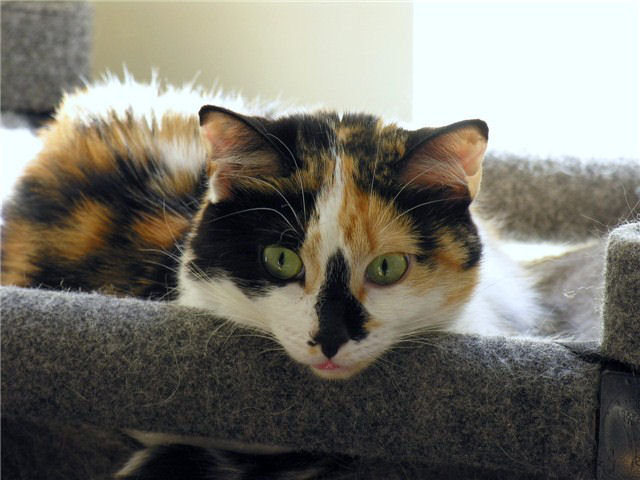

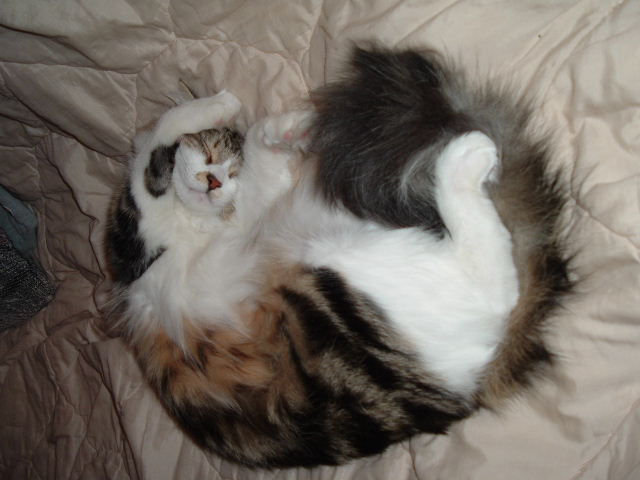
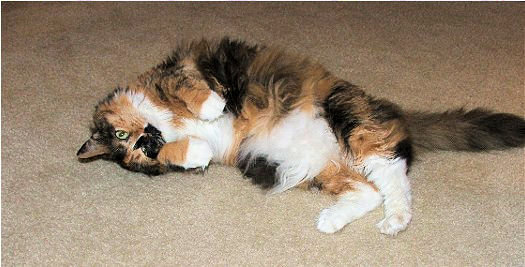
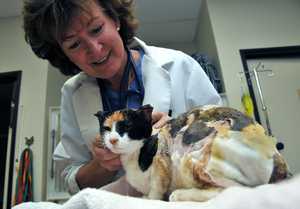
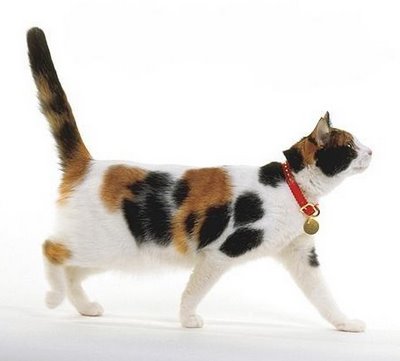

 RSS Feed
RSS Feed